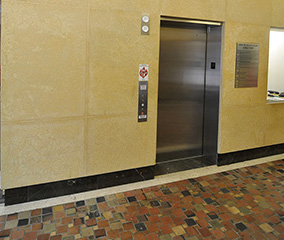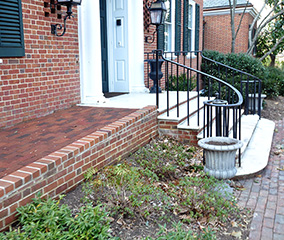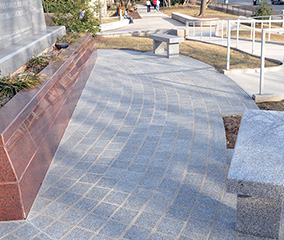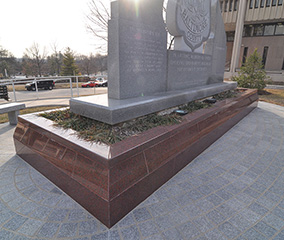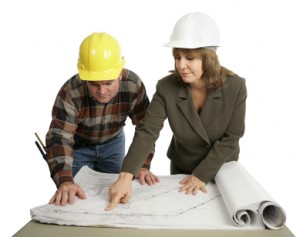 Planning and preparation is the most important part of the masonry demolition process, and the primary reason you should always use a professional demolition service when you demolish a masonry structure. The masonry demolition planning process includes goal identification, site inspection, inspection analysis and planning, budgeting, and finally acquiring a contract and permits. Masonry demolition is a serious process that poses many health and safety risks, and should only be undertaken by professionals who follow the process below.
Planning and preparation is the most important part of the masonry demolition process, and the primary reason you should always use a professional demolition service when you demolish a masonry structure. The masonry demolition planning process includes goal identification, site inspection, inspection analysis and planning, budgeting, and finally acquiring a contract and permits. Masonry demolition is a serious process that poses many health and safety risks, and should only be undertaken by professionals who follow the process below.
Goal Identification
The demolition planning process begins by identifying the goals of the demolition project, whether it’s a full demolition, partial demolition, or a special circumstances demolition. Normal full demolitions are often the easiest to plan and prepare for, though they still take careful planning, particularly in areas with high population densities. A partial demolition, where you’re only taking down a part of the building, can raise some complications especially when the part of the building not being demolished remains occupied during the demolition. However, with the proper planning partial demolitions often go as well as full demolitions. A special circumstances demolition, vary greatly from case to case. A special circumstances demolition might entail demolishing a historic structure brick by brick and rebuilding it somewhere else, or dealing with a structure with special or unusual construction features, or containing hazardous materials while demolishing a contaminated structure. Once the demolition goals are outlined, and understood by all parties involved, a thorough site inspection can begin.
Site Inspection
The site inspection is one of the most important aspects of planning a demolition, as a careless site inspection can lead to unforeseen consequences during demolition. Things missed in a site inspection can lead to material loss, such as damaged equipment, or personal losses from injury or death. During a thorough site inspection the a demolitions specializing inspector will work with owners of the property to identify potential assets, hazardous materials or structural elements, utilities, and other important factors and building conditions. A building demolition inspector may use a checklist, and will take extensive notes to ensure that they know everything they need to about the building and its surrounding area.
Inspection Analysis and Planning
After the inspection the next step in the demolition planning process is for the information gained from the inspection to be analyzed and the demolition planned. The information from the inspection has to be cross checked against itself, and against local, state, and federal codes for building demolition. Once all the factors and conditions are understood by themselves and in relation to each other and the corresponding codes the planning can begin in earnest. Plans will be made for the shutting down of utilities, removal of assets, and disposal of hazardous materials. The method of demolition will be chosen based on the type of structure, surrounding area, and the applicable code requirements. All matters pertaining to safety, both of the workers demolishing the site, those around the structure, and the environments will be taken into consideration. The factors of dust, noise and vibration on the neighboring area will be taken into account. The plan will be formalized in an outline of the process of demolition including preparatory work, protection requirements, the demolition interior and exterior, material handling methods, and cleanup.
The Budget
A budget will be developed based on the requirements of the plan. The budget includes the cost of permits, use of equipment, engineering consultations, environmental surveys, site protection, utility work, preparation, supplies, demolition labor, security, material handling, disposal fees, earth work, cleanup, general and administrative expenses, credit for salvage, and additional charges for subcontractors. As you can see from just the budget, a great deal of work goes into planning and demolishing a structure.
Contract and Permits
The final step of the demolition planning process is to finalize your contracts and acquire the necessary permits. First, a contract between the demolition company and the person hiring is signed, finalizing the budget, schedule, demolition time-table, and permission for demolition. Next the company goes about securing the permits necessary to continue with the demolition. Permits for using equipment, noise permits, asbestos inspection report, zoning demolition permit, any applicable environmental permits, and confirmation from the utilities of the end of services to the structure. Now, you’re actually ready to begin demolitions.
Have questions about the Masonry Demolition Planning Process?
DelPrete Masonry performs demolition for commercial structures that have been damaged or must be removed. Our crews are highly experienced and take every precaution necessary to ensure that the structure, and its surrounding areas, is carefully prepped before demolition. Once the demolition is complete, DelPrete Masonry removes all debris and performs a thorough cleanup, so the existing space is ready for the next phase of development. Hire a professional masonry demolition expert, who performs safely and efficiently, to keep your project on schedule – contact us at 443-250-4193 or email.
Keep up with our blog for masonry related information, and follow us on Facebook, Twitter, and Google+.












